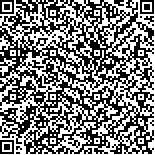| 摘要: |
| 城市自然保护地是自然保护事业的新
常态,中国西南地区既是中国生物多样性保护关
键区域,又是城市化发展迅速的区域,迫切需
要开展城市自然保护地识别研究。本文基于地
理信息系统和遥感技术,进行自然保护区、风景
名胜区等5类自然保护地的标定,并利用夜间灯
光影像、土地利用数据、城市遥感影像等多源数
据识别城市建成区边界,建立基础数据集。在
此基础上,首先通过自然保护地数据与城市建
成区边界数据的叠加识别城市自然保护地,其
次通过网络分析法、等时圈模型识别受城市影
响的自然保护地,并从规模、空间、价值3方面
入手分析了其分布特征。结果表明,在数量规模
方面,城市自然保护地中以湿地公园、风景名胜
区分别为数量、面积上的主体,各类自然保护地
中,分布在城市的90 min等时圈内的数量占本类
自然保护地总量的比值均超过90%。在空间分布方面,城市自然保护地主要分布在平原、丘陵、河湖水系周边等较易开展城市建设的区域,受城
市影响的自然保护地主要沿着省会城市分布,形成“一带四区”的模式。在保护价值方面,城市自
然保护地主要保护内陆湿地,受城市影响的自然保护地则是以森林生态类型为主。本研究为中国
西南地区的自然保护工作及城市自然保护地的相关研究提供借鉴和参考。 |
| 关键词: 城市自然保护地 生物多样性 空间分布 保护管理 等时圈 |
| DOI:10.13791/j.cnki.hsfwest.20220302 |
| 分类号: |
| 基金项目:中 央 高 校 基 本 科 研 业 务 专 项 资 助 项 目
(2662020YLQD003) |
|
| Identification and Spatial Distribution of Urban Protected Areas in Southwest China |
|
WANG Shuyi,ZUO Zitong,ZHONG Le,WU Fei
|
| Abstract: |
| Urban protected areas are the new normal of nature conservation, but there is still
a lack of relevant research in China. Southwest China is not only a key area for biodiversity
conservation in China but also an area with rapid urbanization. It is urgent to research the
identification of urban protected areas. Based on geographic information system and remote
sensing technology, this paper demarcates the geographical spatial position of five types of
natural reserves: National Protected Areas, National Scenic Spots, National Forest Parks,
National Wetland Parks, and National Geological Park, and uses multi-source data such as
night light images, land use data and urban remote sensing images to identify the boundaries of
urban built-up areas and establish basic data sets. First, the urban protected areas are identified
through the superposition of the data of protected areas and the boundary data of urban built-
up areas. Secondly, the protected areas affected by the city are identified through the network
analysis method and isochronal circle model, and their characteristics are analyzed from three
aspects: quantity scale, spatial distribution, and value characteristics.
The results show that: 1) In terms of quantity and scale, wetland parks account for the
highest proportion, 38.95%, and scenic spots account for the highest proportion, 88.42%. The
vast majority of protected areas in Southwest China, except for urban protected areas, are
affected by cities. In terms of quantity, the proportion of protected areas accessible within
30min, 60min, and 90min to all nonurban protected areas in Southwest China is 59.94%,
88.64%, and 95.9%, respectively; In terms of total area, among the protected areas that can
be reached under different time thresholds, the total area of national nature reserves is largest
compared with the other four categories. The National Wetland Park is the smallest. 2) In
terms of spatial distribution, urban protected areas are distributed in plains, hills, rivers, lakes,
and other areas that are easy to build cities and are mainly distributed in areas with relatively
developed economic levels and rich natural resources in all provinces, such as the central part
of Guizhou Province, the west of Chongqing, the East of Sichuan Province and the northeast
of Yunnan Province, especially the west of Chongqing. In terms of various types of urban
protected areas, national wetland parks, national forest parks, and national scenic spots areconcentrated in Sichuan Province, Chongqing city, and Yunnan Province, respectively. There is no regional difference between the distribution of
national geological parks and national protected areas. The protected areas affected by the city are distributed along with the provincial capital cities,
forming a “one belt, four areas” model. This is because the built-up area of the provincial capital cities is larger, the economy is more developed,
and urbanization has a more substantial impact on the protected areas. 3) In terms of protection value, the protected objects of urban protected areas
are more vulnerable to urban impacts and need to be paid special attention. In terms of ecosystem types, inland wetlands are the main protection
objects of urban protected areas in Southwest China. Among the protected areas affected by the city, forest ecology is the main ecological type of the
protected areas, followed by wild animals, mainly including subtropical evergreen broad-leaved forest, subtropical mountain moss evergreen broad-
leaved forest, giant panda, golden monkey, and other precious animals and plants, which need to be paid special attention.
Finally, three suggestions are given, carrying out the protection and management of urban protected areas in Southwest China, exploring new
management modes, balancing the two objectives of “nature protection” and “social entertainment” of urban protected areas, and realizing the
coordinated management of urban protected areas and urban biodiversity. In a word, many protected areas in Southwest China are located in cities,
and a considerable number of protected areas are affected by urbanization. Urban protected areas are a substantial ecological wealth in urban areas,
and they are more likely to face the threat and impact of urbanization. Finding out the background of urban protected areas and putting forward the
coping mechanism can provide references for the nature conservation work in Southwest China and the related research of urban protected areas. |
| Key words: Urban Protected Area Bio-Diversity Spatial Distribution Protection Management Isochronous Cycle |


